Discover 20 hidden attractions, cool sights, and unusual things to do in Santa Monica (United States). Don't miss out on these must-see attractions: Pacific Park, Santa Monica Pier Aquarium, and Two Rodeo. Also, be sure to include Muscle Beach in your itinerary.
Below, you can find the list of the most amazing places you should visit in Santa Monica (California).
Table of Contents
Pacific Park
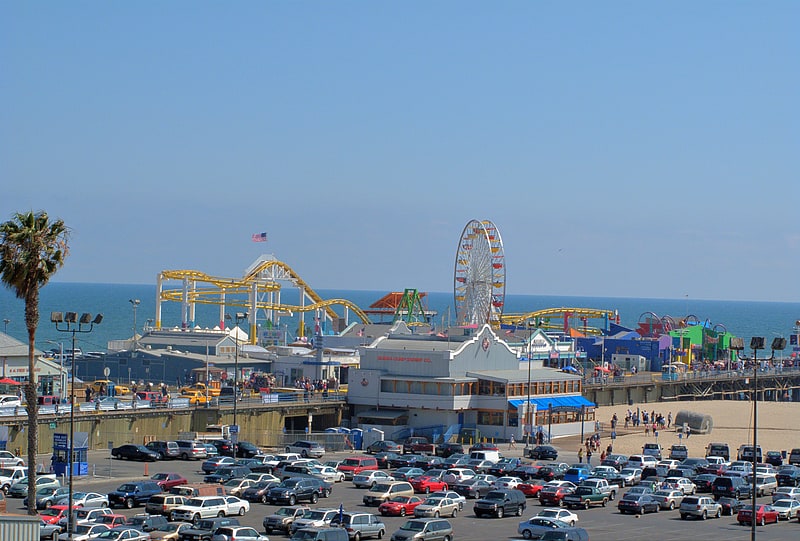
Seaside amusement park with rides and eats. Pacific Park is an oceanfront amusement park located in Santa Monica, California. The park, located on the Santa Monica Pier, looks directly out on the Pacific Ocean, in the direction of Catalina Island. It is the only amusement park directly located on the West Coast of the United States located on a pier and LA's only admission-free park. There are a total of twelve rides in Pacific Plunge, including the world's first and only solar powered Ferris wheel that provides a view of the Pacific Ocean and a roller coaster that circles the majority of the park. Pacific Plunge is also home to 14 midway games and over-the-ocean food and retail outlets. It has appeared in over 500 movies and television shows such as Fat Albert, Hannah Montana, Hannah Montana: The Movie, Kidsongs, 90210, Bean, and The Tonight Show with Jay Leno, as well as the popular video game Grand Theft Auto V. In 2020, it featured in the opening ident for the sky television channel Sky Comedy. It is operated by Premier Parks LLC.[1]
Address: 380 Santa Monica Pier, 90401-3128 Santa Monica (Silicon Beach)
Santa Monica Pier Aquarium
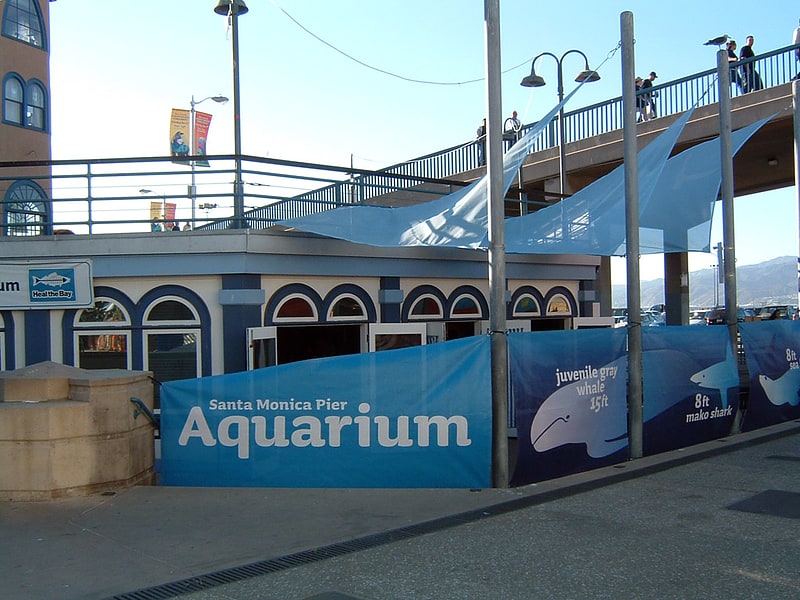
Local marine life and interactive exhibits. Heal the Bay Aquarium, which was previously named the Santa Monica Pier Aquarium, is a private-public aquarium at a California State Beach Park managed by Los Angeles County Department of Beaches and Harbors, located beneath the Santa Monica Pier, adjacent to the Pacific Ocean. Since 2003, it is operated by Heal the Bay, a nonprofit organization. It was formerly known as the Ocean Discovery Center and was operated by UCLA until 2003.
As Heal the Bay's marine education, advocacy, and community science facility, it is open to the general public and attracts more than 100,000 visitors from around the world per year (approximately 15,000 are students). This facility offers educational programs, activities, and special events dedicated to marine conservation, pollution prevention, and environmental education.
Species on display include:[2]
Address: 1600 Ocean Front Walk, 90401 Santa Monica (Silicon Beach)
Two Rodeo

The Rodeo Drive Walk of Style, located on Rodeo Drive in Beverly Hills, California, commemorates people who have made important contributions to fashion, design, and costume.[3]
Address: 200 Rodeo Dr, Santa Monica (West Los Angeles)
Muscle Beach

Gym in Los Angeles, California. Muscle Beach is the Santa Monica birthplace of the United States physical fitness boom, which started in 1934 with predominantly gymnastics activities on the south side of the Santa Monica Pier. Muscle Beach Venice is the contemporary title of the outdoor weightlifting platform constructed in Venice, California, a distinct neighborhood in the city of Los Angeles, 18 years after Muscle Beach was established.[4]
Address: 1746 Ocean Front Walk, 90401 Santa Monica (Silicon Beach)
Santa Monica Civic Auditorium
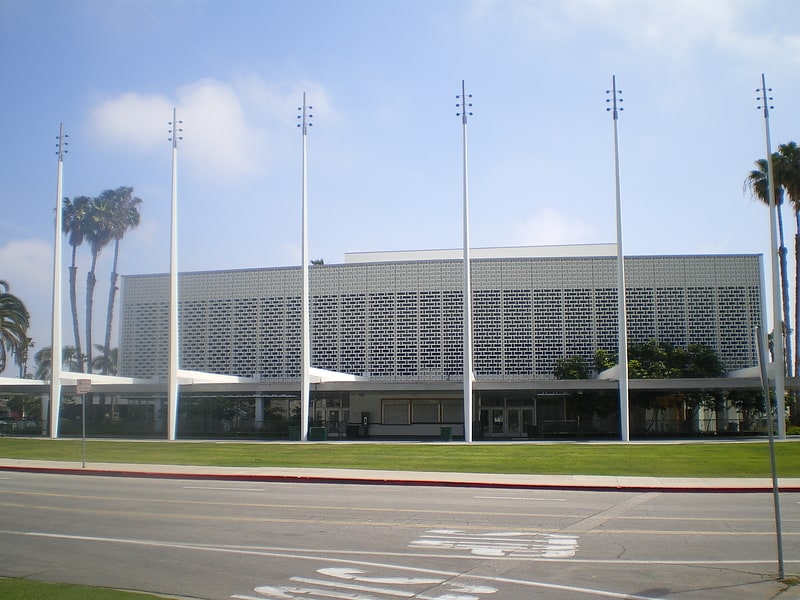
Convention center in Santa Monica, California. Santa Monica Civic Auditorium is a multi-purpose convention center at 1855 Main Street in Santa Monica, California, owned by the City of Santa Monica. It was built in 1958 and designed by Welton Becket and as a concert venue, it has a seating capacity of 3,000.[5]
Address: 1855 Main St, 90401-3209 Santa Monica (Silicon Beach)
Old Growth
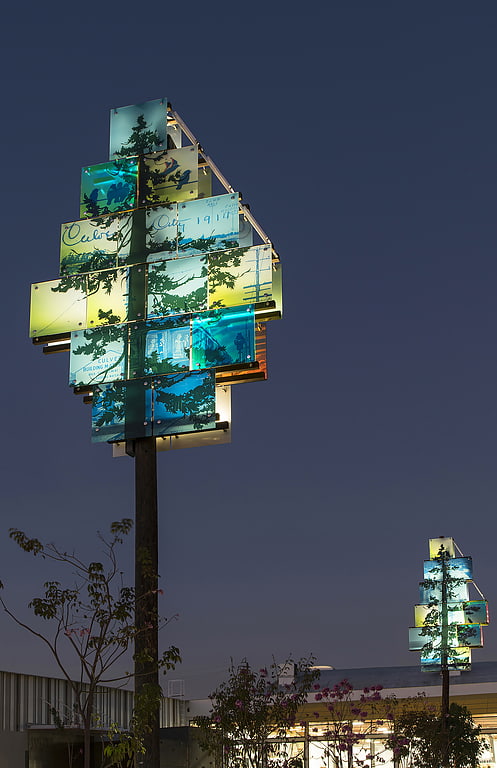
Old Growth is a large scale exterior public art installation by architect and artist Alison Wright. It is located opposite to the Culver City Metro Station.
Electric poles and cross arms support 56 pieces of glass. Historic images from the archives of Southern California Edison and the Culver City Historical Society are placed on one side of the glass. The glass panels on the other side form a Douglas Fir tree, a type of tree that wood utility poles originated from. Unlike typical utility poles, these 40’ tall poles are not connected by power lines. The glass panels are backlit by solar energy via solar panels.[6]
Ivy Substation
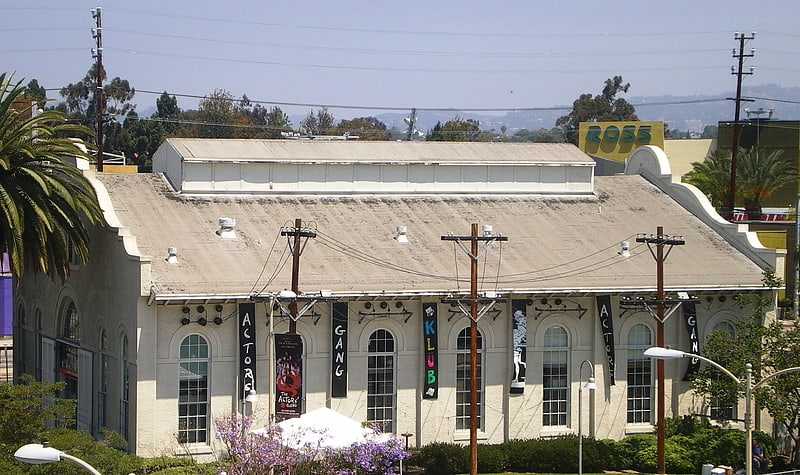
Ivy Substation is a 99-seat theatre in Culver City, California which formerly housed power equipment for the nearby electric railways and Ivy station. It was listed on the National Register of Historic Places in 1981.[7]
Ishihara Park

Park in Santa Monica, California. Ishihara Park is a 2.35 acres linear community park located in Santa Monica, California. The park was opened to the public in February 2017 and is named after George Ishihara, a local resident who fought in World War II as part of the Japanese-American 442nd Regimental Combat Team and participated in the liberation of the Dachau concentration camp.[8]
Virginia Avenue Park

Park in Santa Monica, California. Virginia Avenue Park is a 9.5 acres park located in the Pico neighborhood of Santa Monica, California. Originally opened in 1976, the park was redeveloped and expanded in the 1990s and early 2000s, reopening in 2005. The park hosts a number of community activities such as a weekly farmers market, afterschool programs, and social program assistance. The park is also home to the Pico Branch Library and the Thelma Terry community center.[9]
Santa Monica Looff Hippodrome

Building. The Santa Monica Looff Hippodrome is located on the Newcomb Pier adjacent to the Santa Monica Pier in Santa Monica, California. It was designed and built in 1916 by Charles I. D. Looff and his son Arthur to hold a Looff Carousel. Looff's carousel was housed at the Hippodrome until it was sold in 1939. It was replaced by Philadelphia Toboggan Company Carousel #62, which was moved from the Ocean Park Pier. The building remains a rare example of structures that used to be on the amusement pier, and scenes were filmed therein for the 1973 award-winning film, The Sting. Since 1977, the carousel has been owned by the city, and was restored from 1977 through 1981. It was declared a National Historic Landmark in 1987.[10]
Santa Monica Camera Obscura
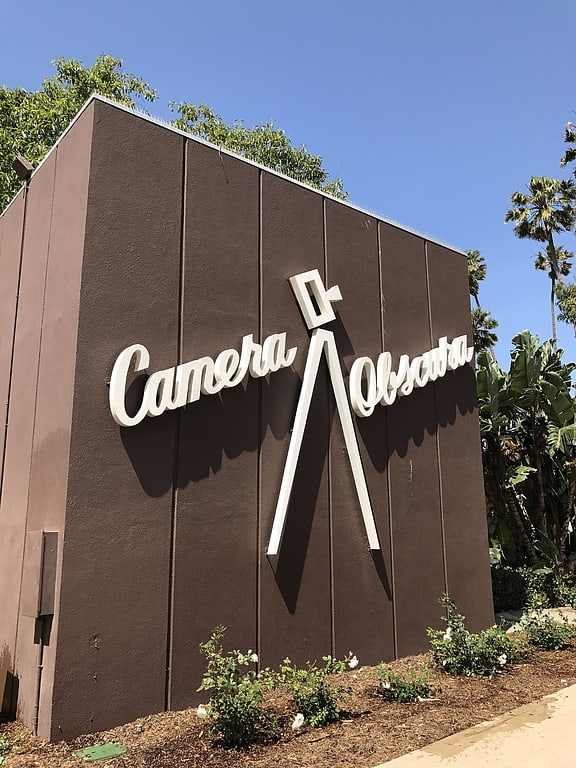
The Santa Monica Camera Obscura is a publicly accessible historical camera obscura, located in Palisades Park overlooking the Pacific Ocean, in Santa Monica, California.
The camera obscura has been in the current building, designed by Weldon J. Fulton, since 1955. The adjoining space was once used as a senior center and is now a community art center.[11]
Binoculars Building
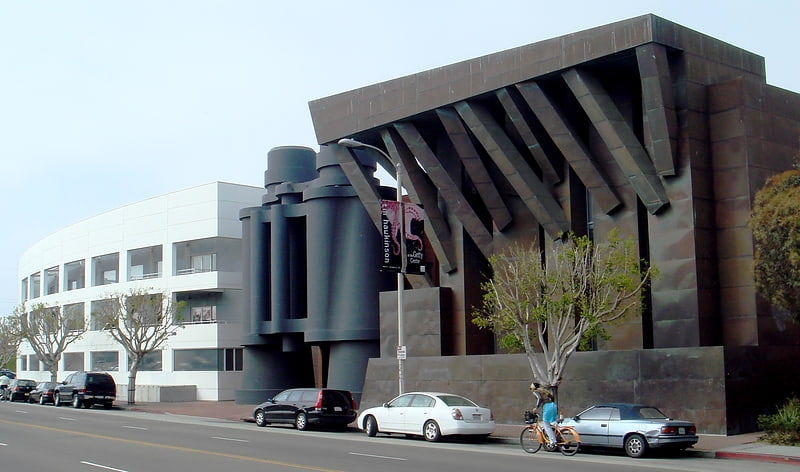
Building. The Binoculars Building is the unofficial name of what was formerly known as the Chiat/Day Building, a commercial building built in 1991 for advertising agency Chiat/Day located in Venice, Los Angeles, California, designed by architect Frank Gehry. The unofficial name is the result of a conflation between the building and the building-mounted public artwork Giant Binoculars by artists Claes Oldenburg and Coosje van Bruggen on its street-facing façade.
The massive Giant Binoculars sculpture covers both a car and pedestrian entrance; the entrance to the parking garage is between the two telescopes of the binoculars. The 75,000-square-foot (7,000 m2) building was delayed for a few years after hazardous materials were found on the building site, requiring removal. The latest tenant of this building was Google in 2011, which added two neighboring buildings as part of a major expansion to establish a larger employment presence in Los Angeles.[12]
McCabe's Guitar Shop

McCabe's Guitar Shop is a musical instrument store and live music venue on Pico Boulevard in Santa Monica, California, United States. Opened in 1958 by Gerald L. McCabe, a well-known furniture designer. McCabe's specializes in acoustic and folk instruments, including guitars, banjos, mandolins, dulcimers, fiddles, ukuleles, psaltries, bouzoukis, sitars, ouds, and ethnic percussion. Since 1969, McCabe's has also been a noted forum for folk concerts.[13]
Address: 3101 Pico Blvd, 90405-2005 Santa Monica (Silicon Beach)
Circle Bar
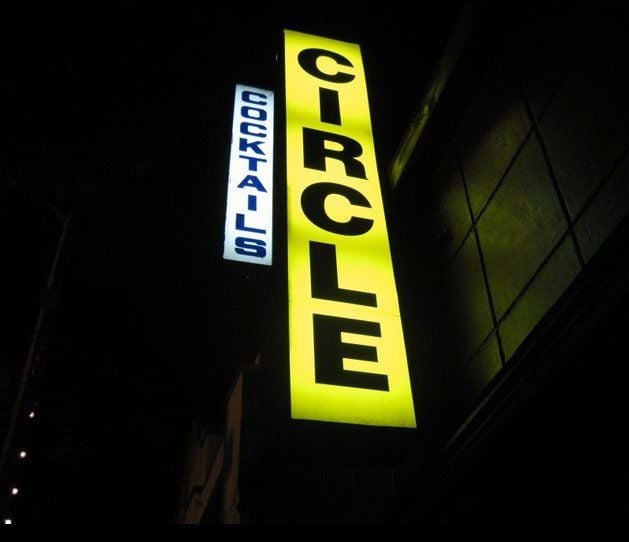
Bar in Santa Monica, California. The Circle Bar is a famous, historic bar and lounge on Main Street in Santa Monica, California, United States. It was established in 1949. Movieline named it one of the 10 best places for young actors to be seen at night.[14]
Address: 2926 Main St, 90405 Santa Monica (Silicon Beach)
Clock Tower Building
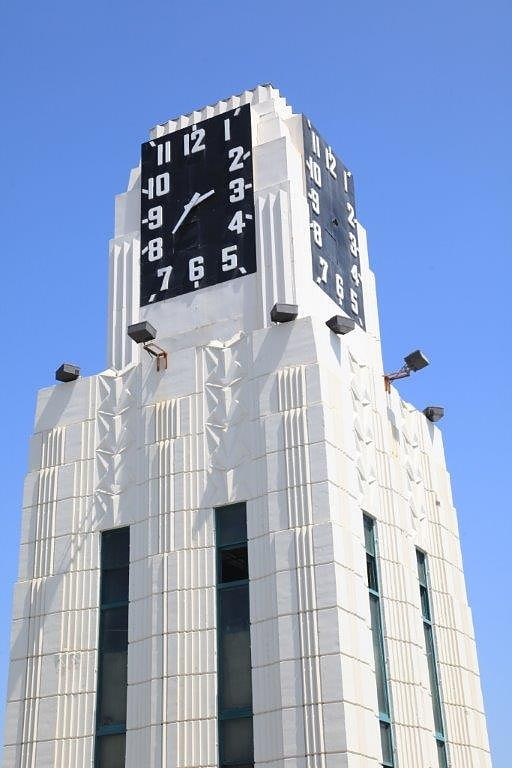
The Clock Tower Building, built between 1929 and 1930 in Art Déco style, is the 4th highest skyscraper in Santa Monica. For around 40 years it held the record for the tallest building in the skyline. The skyscraper was commissioned by the Bay Cities Guaranty and Loan Association to the Californian architects Albert R. Walker and Percy A. Eisen, whose firm, Walker & Eisen, with a staff of more than 50 draughtsmen, was the most important leading practice in California in the 1920s. Among its many completed projects, the firm had recently designed the extraordinary skyscraper in the Romanesque Revival style known as the Fine Arts Building in Los Angeles, one of the most representative buildings in the city.
The Clock Tower Building, not far from the beaches washed by the ocean and with an unobstructed view of the nearby mountains, occupies a rectangular lot located at 225 Santa Monica Boulevard, in the heart of the city’s business district and close to the main thoroughfare Third Street Promenade. The ground floor of the skyscraper, in the form of a compact parallelepipedal block surmounted by a tower, is occupied by retail spaces, and the upper stories by offices.
The seemingly monolithic image of the building is actually enlivened by slight volumetric shifts that divide the high-rise into three sections: a wide basement level characterized by the large entrances to the retail areas; a robust second block, slightly tapered towards the top, that houses offices from the second floor to the twelfth, and lastly a square stepped tower which, placed off-centre with respect to the base, rises skywards and has clock-faces on each side – hence the name Clock Tower.
The skyscraper, with a load-bearing structure in reinforced concrete and steel, is faced with slabs of limpid, pure white stone that both absorbs and reflects the bright light and the clear Californian sky. The large masses and wall decorations of the skyscraper are reminiscent of pre-Columbian architecture, the pure geometries of the stepped temples and the pureness of form found in Mayan and Inca building. The twelve office floors are crowned by a crenellated border, where the most ornate decorations on the cladding are concentrated. The tapered, stepped tower on the top is also faced with white marble slabs, which form a zigzag pattern in relief on the sides and around the edge of the summit; it is visible from everywhere in the city and rendered instantly recognizable due to its rectangular clock with four black dials (one on each side of the tower), and whose shining hands mark the exact time and are an urban signal in the city.
Due to its height, its imposing volumes and the immediate recognizability of its architecture, the Clock Tower Building has possessed a powerful urban identity since it was built. This makes it a true landmark that acts as a compass and guide in the boundless Santa Monica cityscape.
Sorgente Group of America purchased the Clock Tower Building in Santa Monica in May 2013.[15]
Ten Thousand
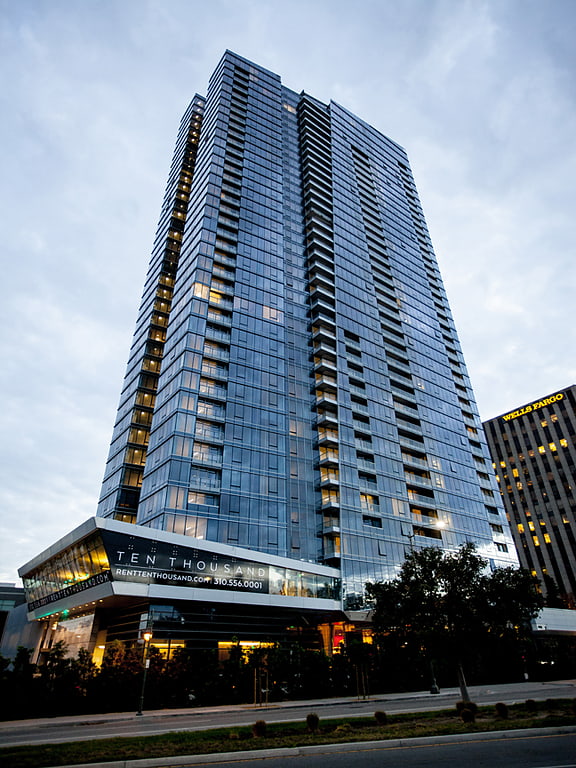
Skyscraper. Ten Thousand is a 40-story residential skyscraper located at 10000 Santa Monica Boulevard, Los Angeles, California. The high-rise tower, built by developer Crescent Heights, has 283 luxury apartments and rises 483 feet. The complex is on the list of the Tallest Buildings in Los Angeles County of The Los Angeles Almanac. Ten Thousand was designed by Handel Architects.[16]
Annenberg Community Beach House
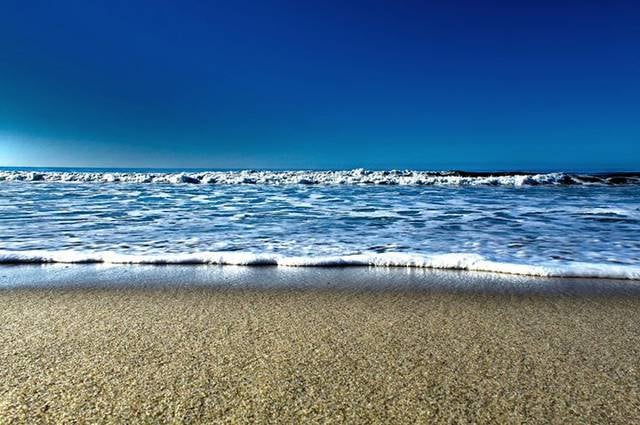
Watersports, Historical place, Visitor center, Art gallery, Shopping, Swimming pool, Museum, Beach, Swimming, Event space
Address: 415 Pacific Coast Hwy, 90402 Santa Monica (West Los Angeles)
Gehry Residence
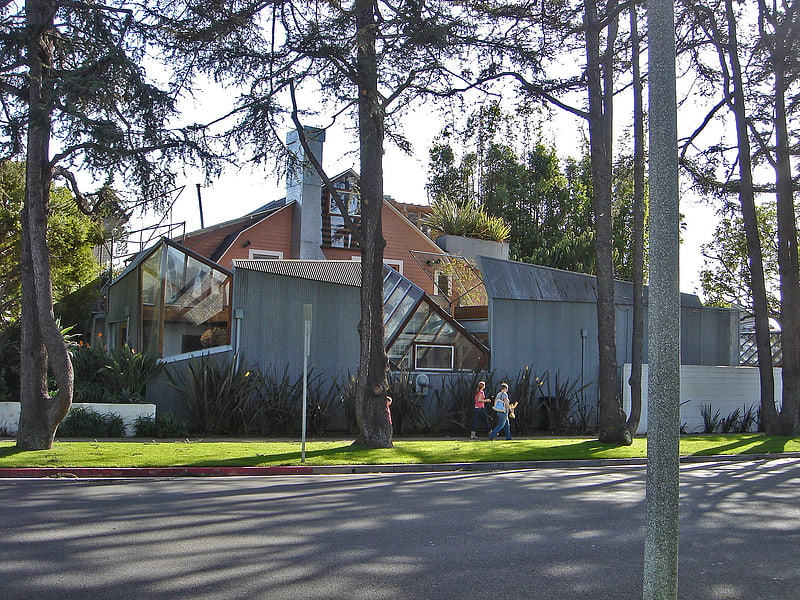
Building in Santa Monica, California. The Gehry Residence is architect Frank Gehry's home. It was originally an extension, designed by Gehry and built around an existing Dutch colonial style house. It makes use of unconventional materials, such as chain-link fences and corrugated steel. It is sometimes considered one of the earliest deconstructivist buildings, although Gehry denies this.
The residence is in Santa Monica, California. In 1977, Frank and Berta Gehry bought a pink bungalow originally built in 1920. Gehry wanted to experiment with the materials he was already using—metal, plywood, chain link fencing, and wood framing. In 1978, he chose to wrap the house with a new exterior while leaving the old exterior visible. He hardly touched the rear and south facades, and to the other sides of the house he added tilted glass cubes. Many of Gehry's neighbors were unhappy with the unusual architecture appearing in their neighborhood.
As of 2016, Gehry still owns the house. Though he has nearly finished building another residence overlooking Rustic Canyon, he plans to keep the Santa Monica house in the family.[17]
Pacific Palisades Business Block

The Business Block building is a historic building located in Pacific Palisades, California, that was designed by architect Clifton Nourse and dedicated in 1924. The building is 30,000 square feet and sits on 36,000 square feet of land. The Business Block building is located between Antioch, Swarthmore and Sunset in the Village neighborhood of Pacific Palisades, an area in the Westside of Los Angeles, California.[18]
St. Monica Catholic Church
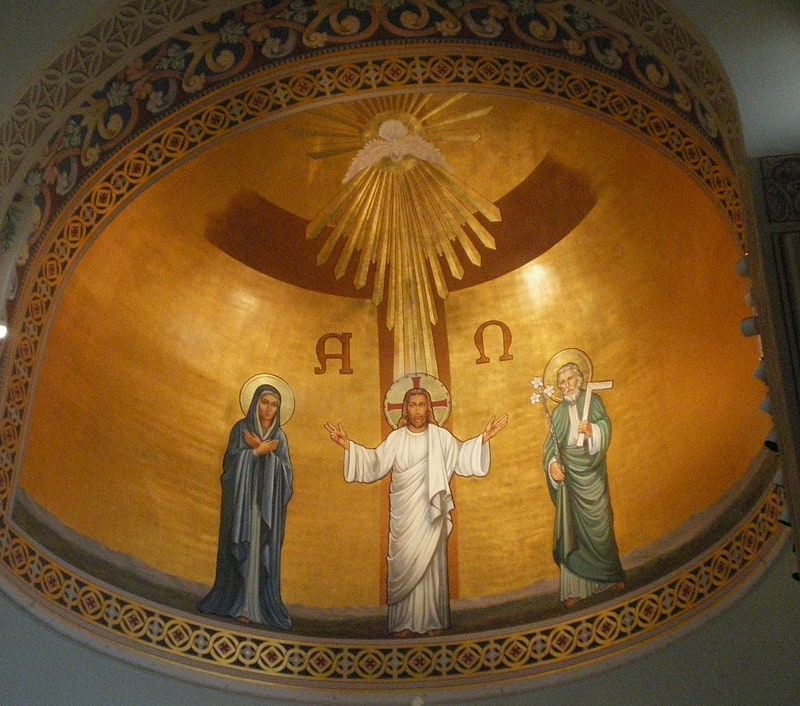
Catholic church in Santa Monica, California. St. Monica Catholic Church, one of the largest Catholic parishes in the Archdiocese of Los Angeles, is in Santa Monica, California. The church, located at 7th and California Streets, was erected in 1925 and served as the inspiration for the 1944 film classic Going My Way with Bing Crosby. It is also the home parish of former California Governor Arnold Schwarzenegger and Maria Shriver.
The Duval Center, one of several buildings on the St. Monica campus, was designed by Frank Gehry and built in 1998. There are two schools associated with St. Monica Catholic Church: St. Monica Catholic Elementary School for grades TK-8 and St. Monica Catholic High School for grades 9-12, both of which are located on the same site as the church.[19]
Address: 701 California Ave, 90403-4005 Santa Monica (Silicon Beach)